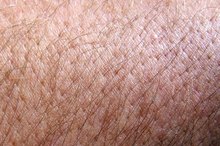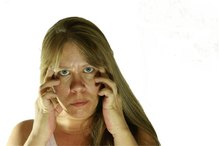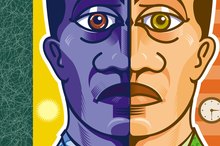What is the Phobia of Public Restrooms?
You might never have heard of them, but public restroom phobias, or toilet phobias, are more common than you think. What makes them so different from the more well-known phobias such as acrophobia and arachnophobia is that they can be debilitating for sufferers, resulting in shame, humiliation and social anxiety--in some cases, to the point of guilt or complete self-isolation. In addition to being probably the second most common social phobia, there is virtually no public awareness of this social anxiety disorder, and very little recognition by the medical and mental health communities.
Definition
Toilet phobia is the umbrella term for a variety of problems related to using--or, rather, the avoidance of--public restrooms. Classified as an anxiety disorder, it's commonly seen by clinicians as a form of social phobia with characteristics that mirror agoraphobia and obsessive-compulsive disorder (OCD).
Agoraphobia is defined as a fear of being trapped in places or situations in which there is no way to easily escape in the event of anxiety or a panic attack, or assumed danger. This can cause sufferers to avoid leaving their homes or doing things and going to places they fear could lead to a problem or embarrassment. OCD involves obsessive, intrusive thoughts that often compel sufferers to repeatedly perform ritualistic behaviors and routines in order to ease their anxiety.
- Toilet phobia is the umbrella term for a variety of problems related to using--or, rather, the avoidance of--public restrooms.
- Agoraphobia is defined as a fear of being trapped in places or situations in which there is no way to easily escape in the event of anxiety or a panic attack, or assumed danger.
类型
The Toxicity of Plug-In Air Fresheners
Learn More
A phobia of public restrooms might include:
- a fear of contamination from using "dirty" toilets
- worrying that people are aware of you using or able to hear you using the toilet
- fear of leaving the house
- being unable to find a "safe" toilet
- being afraid of soiling yourself if leaving a safe locality
- fear of being unable to do your business in a public place
- or a specific fear of toilets or a toilet-related situation due to a traumatic experience
公关evalence
Most of the data on toilet phobias suggests that some four million people in the UK and at least 7 percent of the population of Canada and the United States are affected. However, due to the level of embarrassment associated with this phobia, it's assumed that these numbers are conservative. The average age of onset falls between 12 and 25 years, but toilet phobias can start at any age.
Potential Health Risks
How to Overcome Emotional Numbness
Learn More
除了havi的痛苦和尴尬ng a toilet phobia, a number of avoidance behaviors exist that can be damaging to your health and livelihood. For example, many people with public restroom phobias have quit jobs because of their disorder. Additionally, some might refrain from eating or consuming liquids to avoid needing to use the bathroom when away from home.
Avoidance behaviors can also be damaging to relationships. Children and family members of people with social anxiety disorders can suffer from having to accommodate their special needs2.
- 除了havi的痛苦和尴尬ng a toilet phobia, a number of avoidance behaviors exist that can be damaging to your health and livelihood.
- Additionally, some might refrain from eating or consuming liquids to avoid needing to use the bathroom when away from home.
Treatment
Anxiety disorders, including phobias as well as OCD, are usually treated with cognitive-behavioral therapy, which has a high success rate when therapy is completed2. Although many sufferers of anxiety fare well with anti-anxiety medication, the results of pharmacological treatment have not proven promising with parcopresis or paruresis.
If you or someone you know suffers from a toilet phobia, rest assured that you're not alone and that help is available. Common to all anxiety disorders, avoidance leads only to increased anxiety, guilt and embarrassment, so seeking out professional help is important2. See your doctor or visit contact the International Paruresis Association for information on finding treatment.
- Anxiety disorders, including phobias as well as OCD, are usually treated with cognitive-behavioral therapy, which has a high success rate when therapy is completed 2.
Related Articles
References
- BBC News: "Toilet Phobia Makes Life Hard"
- Anxiety Disorders Assoc. of America: OCD
- BBC新闻说:“数百万遭受厕所恐惧症”
- Substance Abuse and Mental Health Services Administration. DSM-5 Changes: Implications for Child Serious Emotional Disturbance [Internet]. Rockville (MD): Substance Abuse and Mental Health Services Administration (US); 2016 Jun. Table 16, DSM-IV to DSM-5 Social Phobia/Social Anxiety Disorder Comparison.
- American Psychiatric Association. Diagnostic and statistical manual of mental disorders (5th ed.). Washington, DC. 2013.
Resources
Writer Bio
Stewart Brently is an American expat in Taiwan. He has been writing and editing professionally since 2005 and is the owner of The Writing Clinic, a copyediting firm specializing in medical and other academic manuscripts. His publications include EFL textbooks, business and marketing materials, and books on Chinese-English translation. His areas of expertise are health psychology, whole-foods cooking, religion and spirituality, and Vipassana and qi gong meditation. Brently is currently pursuing a Ph.D. in clinical psychology at National Chengchi University.









